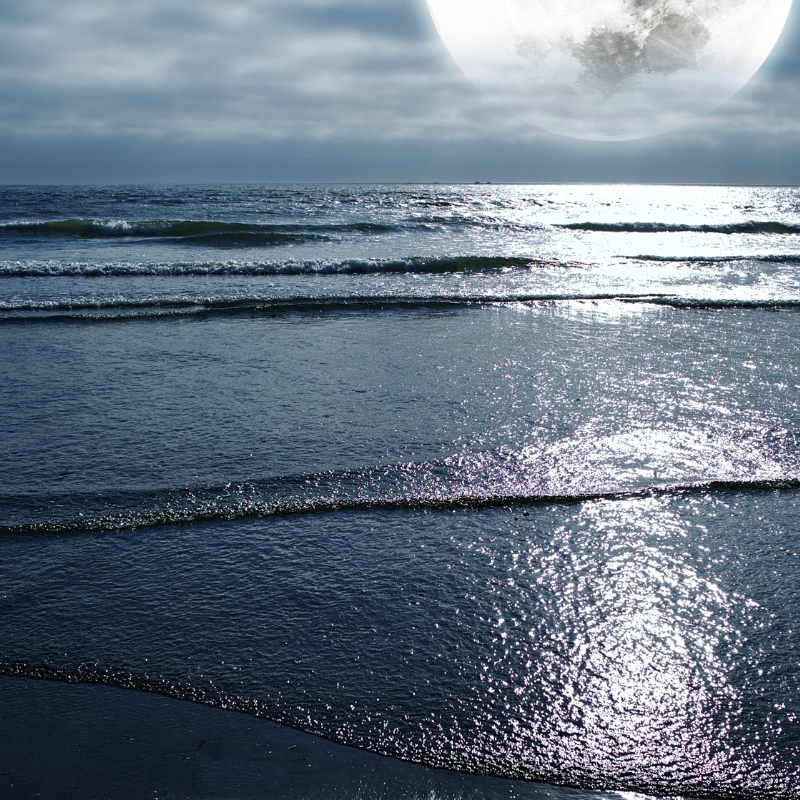The Moon and the Tides of the Sea
Throughout recorded history it has been clearly noted that sea tides - the rise and fall of water around our shores - have something to do with the moon.
In fact, the usual interval between the tide going in and out is around 12 and a half hours, roughly half the time the moon takes to circle the earth.
Isaac Newton explained the tides as being due to the moon's gravitational pull on the water, lifting it to form a bulge resembling an enormous wave crest.
There are actually two such bulges - one on the side of the earth facing the moon and the other on the earth's far side, where the moon's gravitational pull draws the earth away from the water. Between these two bulges the water is lowered, thinning out between these two giant waves.

Friction between the water and the rotating planet earth slows down the movement of these wave bulges, so the bulges are not directly underneath the moon - they lag a little behind. This is why 'high tide', as the bulge is described, does not happen exactly when the moon is overhead, instead it occurs a little later.
To browse our range of wavemakers for aquariums please click here.
To browse our range of marine saltwater aquariums please click here.
Explore our blog pages for more features Around Our Shores.
Photo credit(s): Canva Pro Licence





